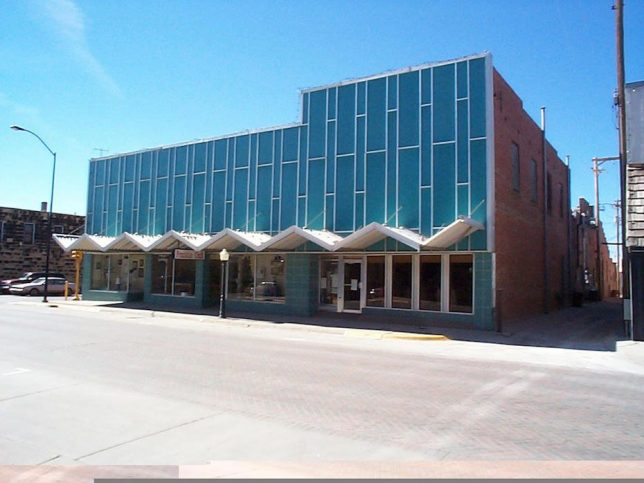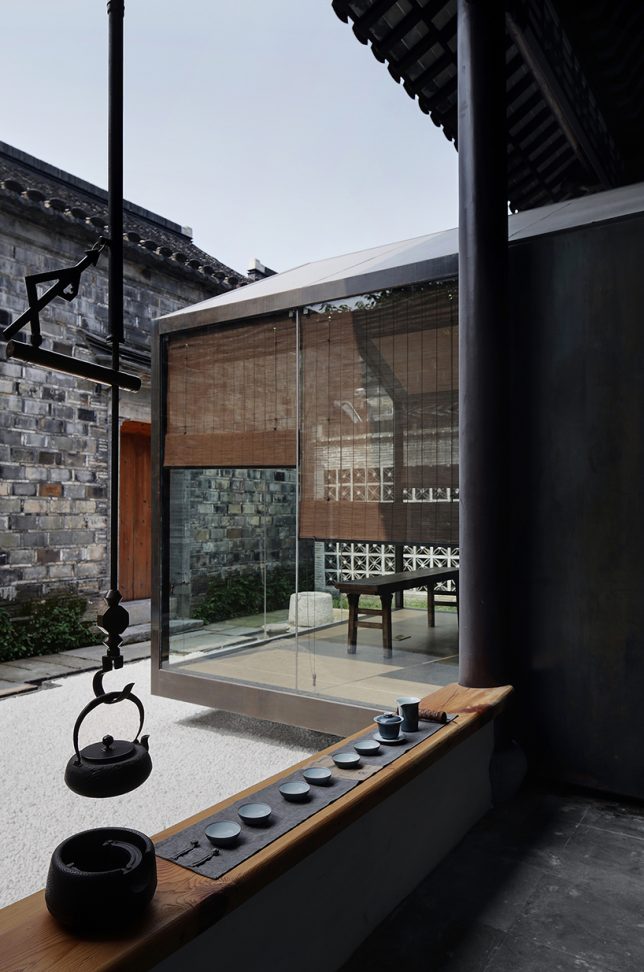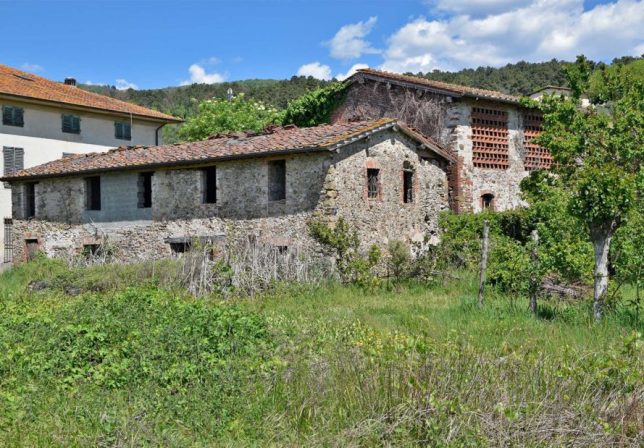 |
| © 2019 David Burnett/Contact Press Images |
It’s not every day that you see someone using a 4 x 5 film camera on TV, and certainly not during the coverage of one of this years’ most-watched events: the opening on Wednesday of the public phase of the house impeachment enquiry into President Donald Trump. But as diplomat William Taylor and State Department official George Kent took their seats, our eye was caught by one figure among the crowd of photographers jostling for a shot, and his camera.
After some quick Twitter research, we identified him as David Burnett, multi award-winning photographer, and veteran of three impeachment hearings. His camera? A custom-made ‘Aero Liberator’. We caught up with David on his drive back to New York after the hearings to learn more about his work, his approach to photography, and that camera.
The following interview has been lightly edited for clarity and flow.
When did you start shooting large format film?
I’ve been shooting with my Speed Graphic for 15, 16 years. I started in 2003-4 doing politics, then I did the Olympics, and some presidential stuff – John Kerry and George Bush. I won a bunch of World Press Photo prizes in 2004-5, ‘Best Sports Story’ with the pictures taken with my Speed Graphic. Along the way I met this guy called John Minnicks, who I happily describe as a mad scientist, who takes a camera and then makes it into something else. John made me this camera, which he calls the ‘Aero Liberator’.
He figured out a way to make it using a Graflex Super D, which is a sweet little camera, and just such a beautiful little thing. So he puts the Aero Ektar lens on it. I’m sort of responsible for the re-birth of that lens in the past 15 years, because for my Speed Graphic, I was getting tired of shooting slow lenses. So I looked around, and I found this F2.5 lens, from a WWII reconnaissance camera.
There must be easier ways of working, as a photojournalist….
If you’re shooting with film holders, you have created for yourself a major impediment. Nobody did that to you, you did it to yourself. And in a way, you could say to yourself ‘well that was kind of a dumb move, why can’t you just shoot cool digital cameras like everybody else?’ And I’ve got Sony a7s and a9s and I love those cameras. But one frame, having the wherewithal and the guts to slow down and figure out when that one frame is supposed to be shot, that’s the real deal.
 |
WW1 re-enactors at the 2019 Veteran’s Day Parade, New York City.
© 2019 David Burnett/Contact Press Images |
So the other day, I walked up and down 5th Avenue during the Veterans Day parade, I shot 18 frames. I’ve been shooting this stuff for 15 years now. You could ask why would you tie one hand behind your back by working like that? When you force yourself to step up to that challenge, and you get a picture – and you don’t always get a picture! I may not have anything from today, in which case my so-called ‘heroic’ actions will have been for naught! But it’s worth a try.
I’ve been doing this a long time, and I love being fired up enough to still want to do something a little different, and a little challenging.
Did you know that you were featured in the live stream from the hearing?
I had no idea that I was on-camera. We’d all just gotten into the room to figure out where we were going to be. I was just standing there with my camera, and I’d brought along my little Sony a6500, which today I was using with an old 1940s Kodak Cine lens, a 50mm F1.6 Anastigmat. It’s very fun! It rekindles the fun, and makes it challenging.
 |
| David Burnett at the opening of the house impeachment hearings on Tuesday November 12th, with his custom ‘Aero Liberator’ 4 x 5 film camera. (NBC News) |
Your first color assignment was covering Apollo 11, and that was 50 years ago…
I know, that was a long time ago!
What keeps you doing it?
I don’t know if you’ve seen the wonderful movie that Stephen Wilkes did about Jay Maisel? It’s called ‘Jay, Myself’. There’s a wonderful moment in there when Jay says ‘I love photographs, but I really love photographing’. You have to decide which is your dominant personal motivation. And watching the movie I was thinking ‘well, I know which one I would choose – I wonder if I chose the right one?’
There are many times when you don’t get the picture, but the act of being there and trying to get it is not a bad thing.
I love photographing. I’d prefer to be paid for it, but there are times when it’s pretty clear I’m not going to be paid for it and if I want to go shoot something, I’ll go shoot it. There are many times when you don’t get the picture that you want, but the act of being there and trying to get it is not a bad thing. Just be happy to share and discover.
Were you on assignment today?
No, that was just me. I was at the Nixon hearings, and Clinton, and I felt that historic pang.
So this is your third impeachment?
I will be my third, yeah! But it’s not really about politics for me. I’ve been going to the white house for 52 years. The only thing I care about is how I feel when I walk through the North West gate. It’s always special. I’ve been there for Nixon, Johnson, both Bushes – everybody. For me it’s about the institution, and how it still works. That’s the cool thing. That’s really what draws me to politics. Eventually you’ll find yourself in a place where for 200 years people have been doing the same thing.
It’s a great tradition to be able to walk into that place with a camera and try not to get to beat by everyone around you. And that happens a lot! Turns out there are a lot of really great photographers, men and women, that work there.
 |
President Lyndon B. Johnson at a joint session.
© 2019 David Burnett/Contact Press Images |
Watching you in the footage today, I’m interested to know about your process.
With this camera, it’s a mirror reflex so you look down into it from overhead. I kind of eyeball it, roughly, then I’m just looking at Ambassador Taylor to see if I can identify a moment which might be more interesting than half a second ago, or half a second from now. A thing like this, where you don’t have long, and then you have to back away, I try to get my focus where I think he’s going to be, but I don’t always shoot right away. You’ve got one shot, and by the time you’re ready for the next one that’s maybe 20 or 30 seconds. I can do it pretty quickly, I’m not bad with it, but there’s a lot to do on those cameras.
The ‘Speed‘ Graphic? I mean – compared to what? Well, compared to what came before it, it was pretty good.
 |
Natalie Coughlin, Olympic Gold Medalist.
© 2019 David Burnett/Contact Press Images |
What kind of reaction does the old film equipment get?
When you bring out a camera like that, people tend to give you a second of hesitation, before they say ‘no’. It puts you in a slightly different place as a photographer, as a journalist and an artist. Compared to if you were showing up with the usual three or four digital cameras and all that stuff. ‘OK, this is a little different’. And it’s much appreciated, by me. As long as you don’t drop it, or do something stupid, it definitely gives you a little bit of an edge.
I was the only guy at the Olympics to get a letter saying ‘he’s authorized to carry a tripod’.
It’s hilarious – I used to carry my Speed Graphic around at the Olympics. I was the only guy at the last three Olympics to get a letter from the Olympics chief saying ‘he’s authorized to carry a tripod’. It’s been great, I made a few really good pictures, and maybe you could have made the same picture with a digital camera, but when you see all the flaws that can happen [with large format film] it has more of an honesty about it. There are 100 things that could go wrong, and any one of them can really screw you up.
If it turns out that you didn’t get any shots from today, how would you feel?
Well, I looked at my digital pictures already, and honestly, I’m going to look at the papers tonight and tomorrow and see who made a great picture. There was some real talent in that room. I mean real talent. Doug Mills, Damon Winter – those guys, it’s hard to do better than either of them. Scott Applewhite from AP was there, there were some really good people in the room.
So if I don’t get anything, I won’t feel like a total schmo but I’ll be a little disappointed. But I made a couple of good pictures at the veterans parade on Monday and that kicked me in the ass to decide to go give it a try.
How long before you’ll know?
Well it’s Wednesday night now, so maybe Friday afternoon if I’m lucky. I’ll let you know!
Visit David Burnett’s website to see more of his work
Learn more about the Aero Liberator by John Minnicks
Articles: Digital Photography Review (dpreview.com)









































































You must be logged in to post a comment.